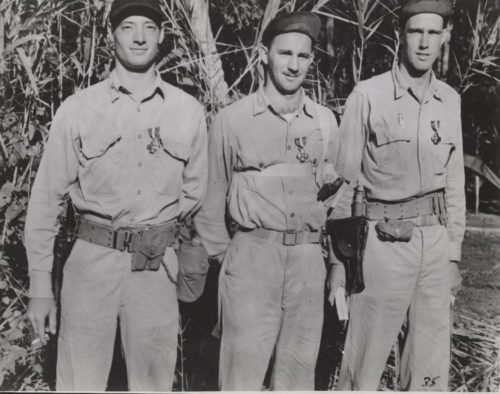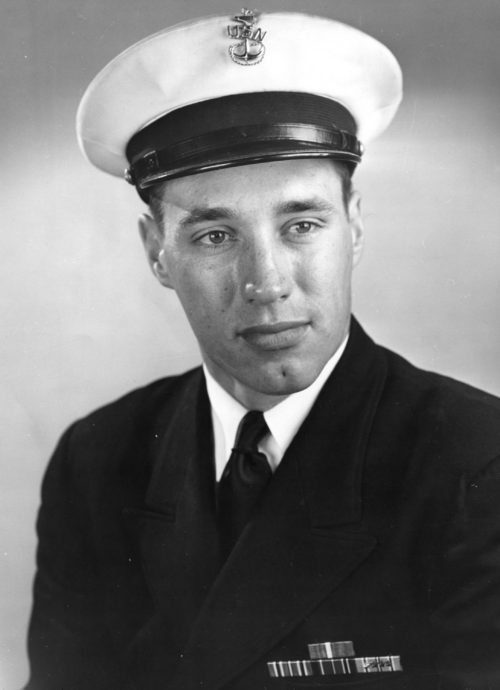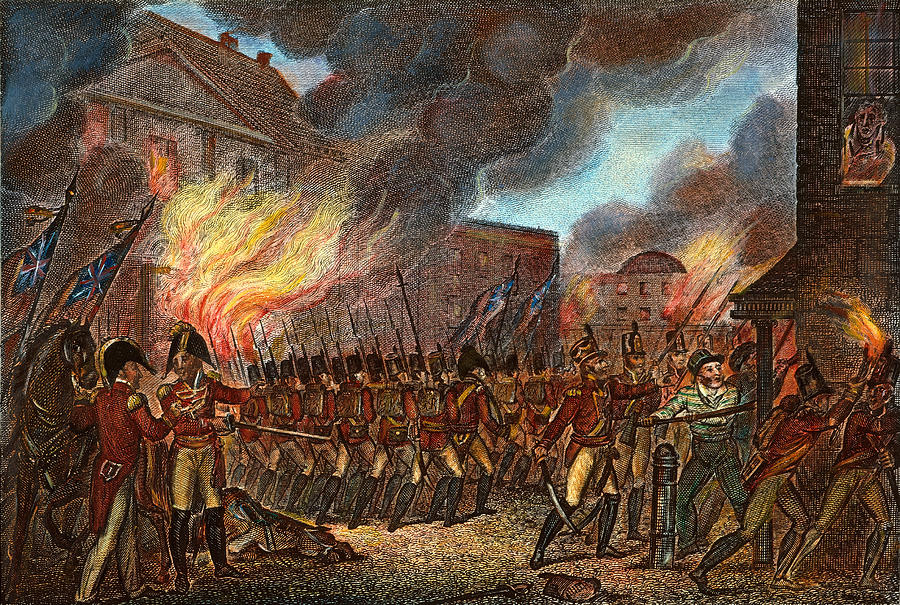August 24 in U.S. military history
1814: Just ten miles northeast of Washington, D.C., British soldiers and Royal Marines clash with an American force of militia and a detachment of Marines and sailors in the Battle of Bladensburg (featured image). The professional British troops easily scatter the militia, but run into a wall when they square off against the Marines. In their first volley, the leathernecks destroy an entire company of the King’s men then pursue their foe into a ravine.
Capt. Samuel Bacon, Quartermaster of the Marine Corps, said “I will tell you something now about the battle of Bladensburg. […] The Marines are a dead shot.” The bodies of 150 British soldiers covered the battlefield in front of the Marines’ lines before the Americans are routed, leaving to road to the capital open in what is considered “the greatest disgrace ever dealt to American arms.” Gen. Robert Ross’ exhausted troops – several of which died during the battle from exhaustion after long marches – avenge the American destruction of Port Dover (in present-day Ontario) in May by setting fire to the Presidential Mansion (now called the White House), Capitol Building, and numerous other government and military facilities.
However, the British only hold Washington for one day before a massive storm blows through, severely damaging the British ships and causes the occupiers to abandon the area.
1912: The Navy’s first electrically powered ship, USS Jupiter (AC-3) is launched. Ten years later, a flight deck is added to the 542-ft. vessel, and the renamed USS Langley becomes America’s first aircraft carrier.
1942: Vice Adm. Frank J. Fletcher’s Task Force 61 and a Japanese carrier division converge in the Solomon Islands as Japanese troops attempt to reinforce Guadalcanal. The Battle of the Eastern Solomons is fought entirely by aircraft; the Japanese inflict serious damage on USS Enterprise (CV-6), while the Americans sink several vessels, including the light carrier Ryujo.
Over Guadalcanal, Japanese warplanes clash with Army and Marine aircraft of the “Cactus Air Force,” with Capt. Marion E. Carl in his F4F Wildcat scoring four of the day’s ten Allied victories, becoming the Marine Corps’ first ace.

1945: Just two days after being discharged from the service, Chief Petty Officer Bob Feller returns to Cleveland and is honored by a parade before pitching in his first major league game since becoming the first professional athlete to enlist in the Armed Forces during World War II. Despite losing nearly four years to his military service – Feller served aboard the battleship USS Alabama – the future Hall of Famer strikes out 12 batters and only allows four hits in the Indians 4-2 win over the Detroit Tigers.

1969: In Quang Tri Province, a team of 3rd Reconnaissance Battalion Marines are ambushed by machinegun and automatic weapon fire in the early morning hours. Lance Cpl. Richard A. Anderson is hit in both legs and knocked to the ground, where he takes up a prone position and pours suppressive fire into the enemy. He keeps up the attack, despite being wounded again. As a medic treats his wounds, Anderson spots an enemy grenade landing in their position. He rolls on top of the grenade and absorbs the deadly blast with his body, saving several nearby Marines.
Anderson is posthumously awarded the Medal of Honor.
